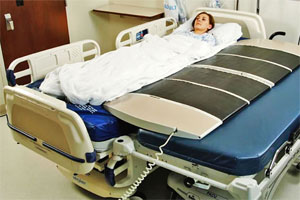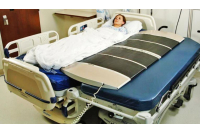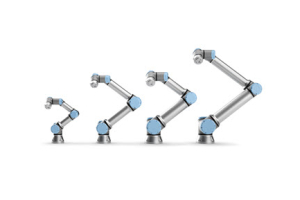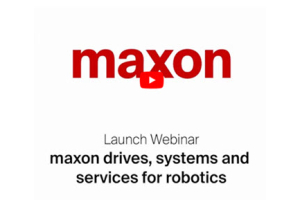
A growing problem in the medical field and particularly for nurses, is staffing, or the lack thereof, which leads to fewer staff available to assist in lifting heavier patients. Over exertion has led to musculoskeletal disorders (MSDs) in many nurses, including back injuries. It’s stated that approximately 12% of nurses leave the profession every year due to a back injury, while an astonishing 52% suffer from chronic back pain. Nurses who work in nursing homes have even higher rates of injury and until recently, moving a patient was done manually or with little automation. This is where maxon’s DC motors for automated patient transfer devices play a crucial role.
What is an Automatic Patient Transfer Device?
An automatic patient transfer device is a fully automated device that allows a single nurse to safely and comfortably transfer a patient, removing the risk of injury to the nurse. Astir Technologies created such a device using the latest technologies with the goal of reducing injuries to healthcare professionals, decreasing hospital costs, and minimizing patient discomfort.
PowerNurse™
The PowerNurse™ was designed and manufactured by Astir Technologies in their mission to create a fully automated patient transfer device. All of its mechanisms are packaged within a low-profile (74- x 28- x 2.3-inch) assembly that rides over any standard hospital stretcher. The PowerNurse enables healthcare professionals to easily move patients between hospital beds, stretchers, imaging equipment, operating room and exam tables.
According to Chris McNulty, the President of Astir Technologies and developer of PowerNurse said “other less expensive friction reducing devices decrease but do not eliminate the risk of nurse injury while performing a lateral transfer.” PowerNurse was made possible due in large part to technological advancements and miniaturization of parts in recent years. High-power rare-earth magnets and advances in motor winding have led to high torque motors in small packages.
“Maxon leads the industry with a wide selection of high-end products that made it possible to lower the profile of the PowerNurse, leading to a more comfortable and effective product.” – Chris McNulty, Astir Technologies President
PowerNurse is driven by a push-button and requires no software interface, operating in three modes: burrow, pad align, and transfer. While in burrow mode, the belts are used to pull the patient on top of the device, while the belts on the bottom move the device underneath the patient. This is done simultaneously to provide a smoother transfer than other devices.
In its pad align mode, only the top conveyor belts are energized, aligning the patient and incontinence pad if necessary. Transfer mode functions in an opposite fashion, energizing the bottom belts to transfer the PowerNurse, with the patient on top, to an adjacent surface. Four maxon motors are used to enable all three operational modes. Astir Technologies continue to investigate advancements to make the PowerNurse even easier to use.
How do maxon motors play a role in the PowerNurse?
The PowerNurse utilizes a series of conveyor belts, motors, and electronics within its low profile to allow the transfer of heavyweight objects or people automatically. While developing his first prototype, McNulty found that he could easily transfer over 400 pounds while using only 1/5th of the capacity of the 250 Watt Maxon EC45 motors utilized in the device. This finding meant that the smaller 120 Watt ECmax 40 motors could be utilized in the PowerNurse, while the EC45 motors were better suited for a bariatric model in development.
By incorporating a two-speed option into his beta model, made possible by Maxon’s wide selection of gearbox diameters, gear ratios, and number of gear stages, McNulty was able to fine tune overall speed and maintain high torque levels. The PowerNurse consists of four ECmax 40 motors; four GP 42C, three-stage, 43:1 gearboxes; and four DEC50/5 servo-amplifiers with a 400 Q, 48 VDC power supply.
For more information regarding maxon motors for automatic transfer devices, read the full article here or contact Electromate today.






